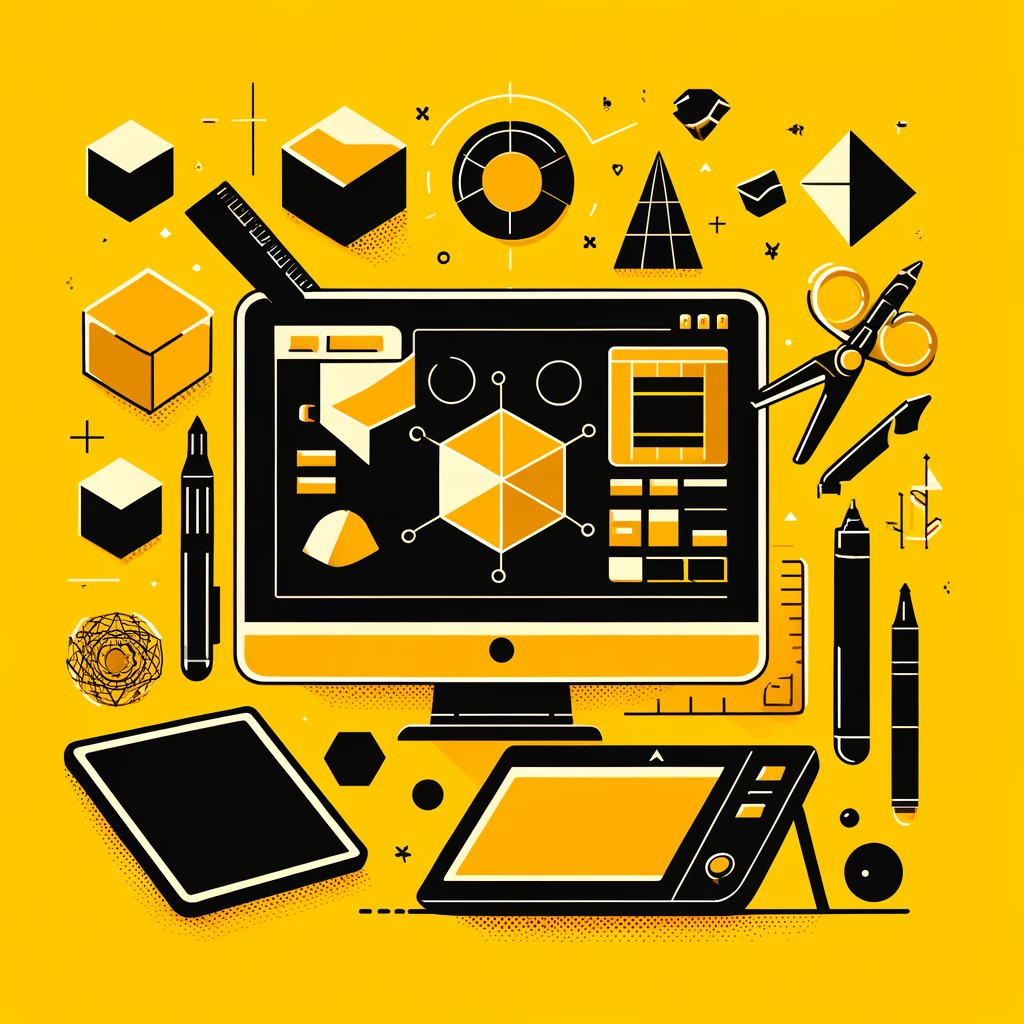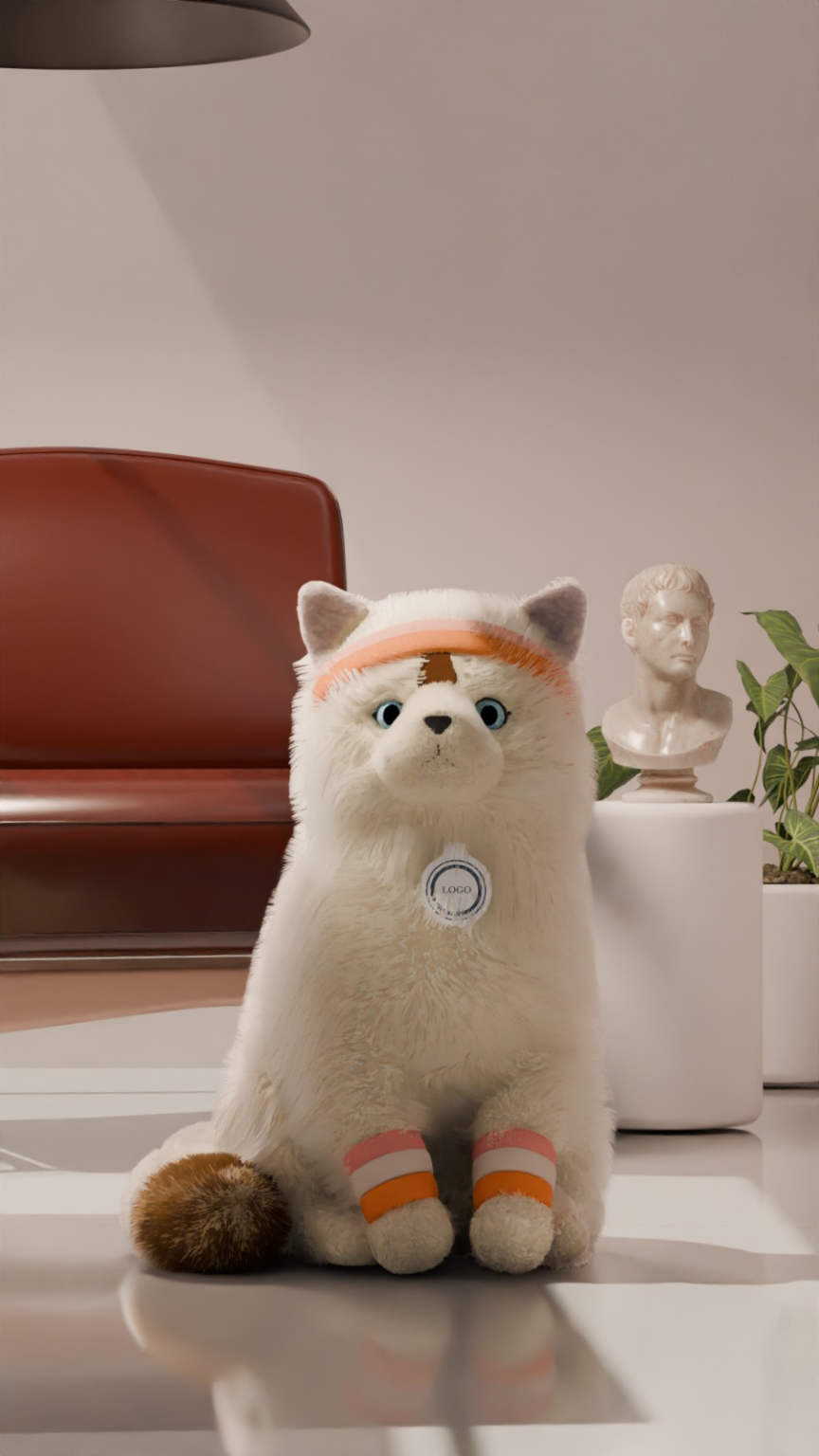3D Modeling and Design of Toy Characters: Creating a Realistic Plush Doll Cat
Introduction:
3D modeling and design of toy characters involve creating detailed digital representations of characters that will be manufactured as toys. This process begins with conceptual sketches, which are then transformed into three-dimensional digital models using software such as Blender or ZBrush. The 3D models allow designers to experiment with proportions, textures, and colors, ensuring the final product is visually appealing and structurally sound.

These digital models are essential for creating precise prototypes using 3D printing technology. Additionally, they enable designers to make quick adjustments and visualize the toy from all angles. Beyond manufacturing, 3D models of toy characters can be used in marketing materials, video games, and augmented reality applications, providing a cohesive and interactive experience for consumers. This integration of technology enhances creativity, reduces production costs, and accelerates time-to-market, revolutionizing the toy industry.
3D Modeling and Design of Toy Characters: Creating a Realistic Plush Doll Cat
In a recent project, we undertook the challenge of creating a 3D model of a plush doll Cat. This model needed to look incredibly realistic with genuine fur details and be suitable for animations. Here’s a detailed account of our journey through this fascinating project.
Client Requirements and Initial Steps
Our client had a clear vision: they wanted to create life like 3D models of their dolls, complete with realistic fur details, and ensure these models were animation-ready. To achieve this, we followed a meticulous process, starting with gathering reference materials and creating initial sketches.
1. Gathering Reference Images
The first step involved the client sharing reference images that could guide the modeling and texturing process. These images were crucial for understanding the texture, fur patterns, and overall aesthetics the client desired. The images served as a foundation for creating a model that would meet the client’s expectations.
2. Creating 2D Sketches for Turnarounds
With the reference images in hand, our next task was to create 2D sketches. These sketches, known as turnarounds, provided different views of the cat—front, back, and sides. Turnarounds are essential in the 3D modeling process as they offer a comprehensive guide for the 3D artist, ensuring consistency and accuracy in the final model.
3D Modeling and Sculpting
Once the 2D sketches were approved, we moved on to the actual 3D modeling phase, utilizing industry-standard software to bring the plush doll Cat to life.
1. 3D Modeling in Blender
Blender, an open-source 3D creation suite, was our tool of choice for the initial modeling. Blender’s robust features allowed us to create a basic model of the plush doll Cat, focusing on the overall shape and proportions. This phase involved meticulous adjustments to ensure the model closely matched the approved sketches.
2. Detailed Sculpting in ZBrush
After achieving a satisfactory base model in Blender, we imported the model into ZBrush for detailed sculpting. ZBrush excels in adding fine details, which is essential for creating the realistic fur texture and intricate features of the cat. We carefully sculpted the fur, ensuring each strand looked natural and lifelike.

Adding Fur Details and Client Feedback
3D fur is one of the most challenging aspects of creating realistic models. It requires a combination of technical skill and artistic finesse.
1. Fur Creation and Texturing
We used specialized fur creation tools and techniques to add realistic fur to the model. This involved not just sculpting but also texturing to ensure the fur had the right color gradients and shading. The goal was to make the fur look as genuine as possible, mimicking the appearance of real plush.
2. Client Feedback and Revisions
After completing the initial fur detailing, we shared an update with the client. The feedback was positive overall, with the client appreciating the lifelike fur. However, they requested more pronounced features for the nose and mouth.
Client feedback is a critical part of the iterative design process, allowing us to refine the model to meet their exact specifications.
3. Incorporating AI-generated References
To assist in making the final adjustments, the client provided additional reference images generated through an AI software. These images offered new perspectives and details, helping us fine-tune the model further. The AI-generated references were particularly useful in enhancing the realism of the facial features.
Please refer to this page:
Finalizing and Delivering the Model
With the feedback incorporated and final adjustments made, we moved towards completing the project.
1. Final Touches and Polishing
The last phase involved polishing the model to ensure it was animation-ready. This included optimizing the mesh, ensuring the fur behaved correctly during animations, and making final tweaks to the textures and details.
2. Delivery of the Final Model
Once satisfied with the final version, we delivered the 3D model to the client. The model was now ready for use in their animations, fitting seamlessly into any scene with its realistic appearance and intricate details.
Reflection on the Project
This project was a testament to the collaborative effort between the client and our team. The clear communication and iterative feedback process were crucial in achieving the desired outcome. By combining traditional artistic techniques with advanced 3D modeling tools, we were able to create a plush doll Cat that was both lifelike and suitable for animations.
In summary, the creation of the 3D plush doll Cat involved:
1. Gathering and analyzing reference images
2. Creating 2D turnaround sketches
3. 3D modeling in Blender
4. Detailed sculpting in ZBrush
5. Adding realistic fur details
6. Iterative feedback and revisions
7. Incorporating AI-generated references
8. Final polishing and delivery
Each step was vital in ensuring the model met the client’s high standards and was ready for its role in animated scenes. This project not only highlighted the technical skills required for 3D modeling but also underscored the importance of client collaboration and iterative design in creating truly lifelike and functional 3D characters.
If you are interested in bringing your visions to life with our services, please do not hesitate to contact us:
We are excited to collaborate on new projects and continue pushing the boundaries of 3D modeling and design.
